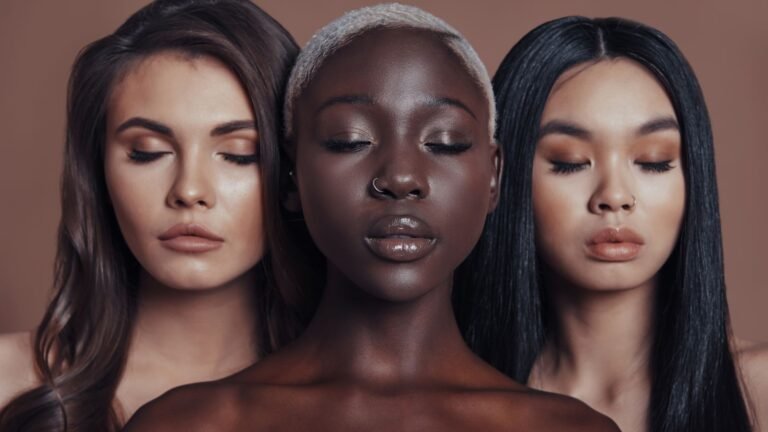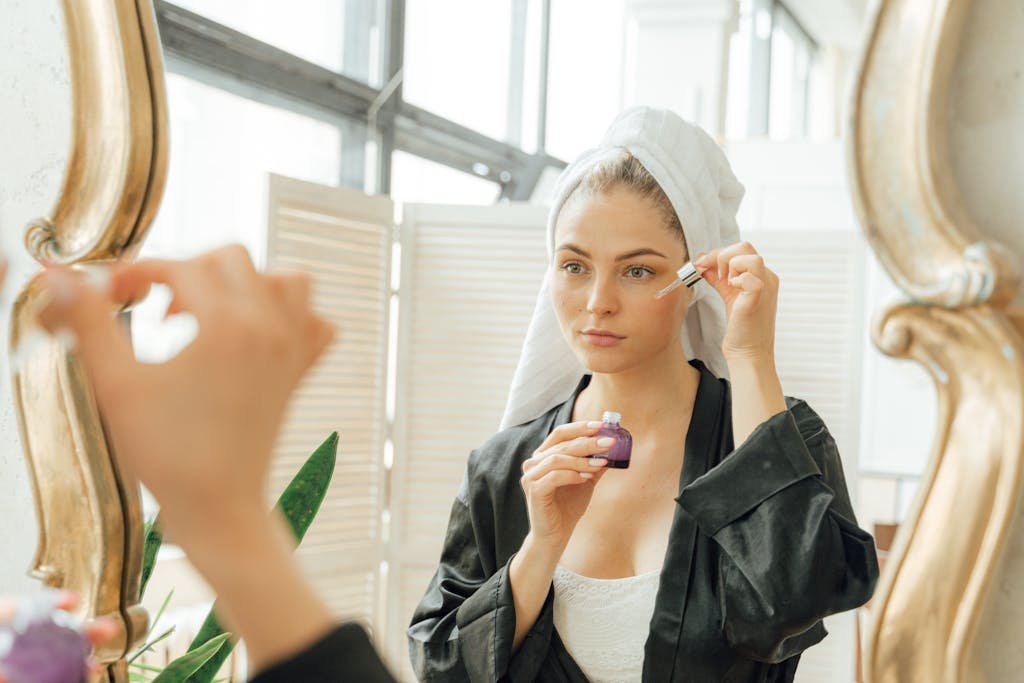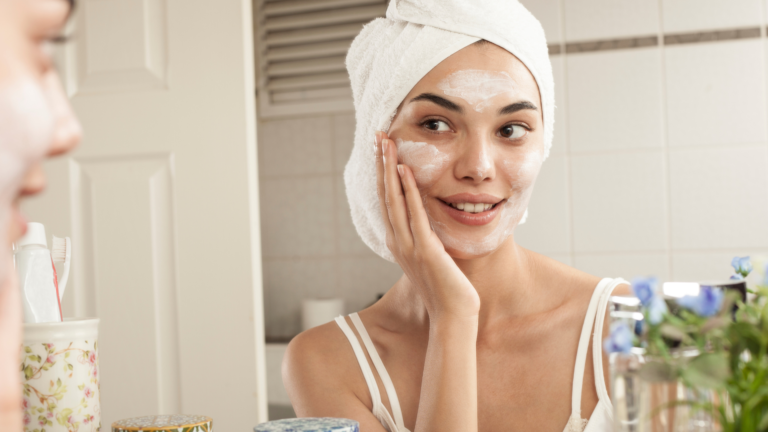How Does Self Tanning Work? Is it Safe?
This post may contain affiliate links. That means that if you click on a link and purchase something I recommend, I will receive a small commission at no extra cost to you. As an Amazon Associate, I earn from qualifying purchases. This helps keep my website up and running and is very appreciated. Thank you for your support! Disclaimer
In Today’s article , I felt like talking about self-tanners. Last week, I made a post on Instagram about how self-tanners can make us look older faster, and the response was surprising. Many of you seemed shocked by this, so I thought I’d explore the topic further. So let’s start from the beginning and learn all about self-tanners together.
If you don’t have time to read this post right now, why not save it for later?
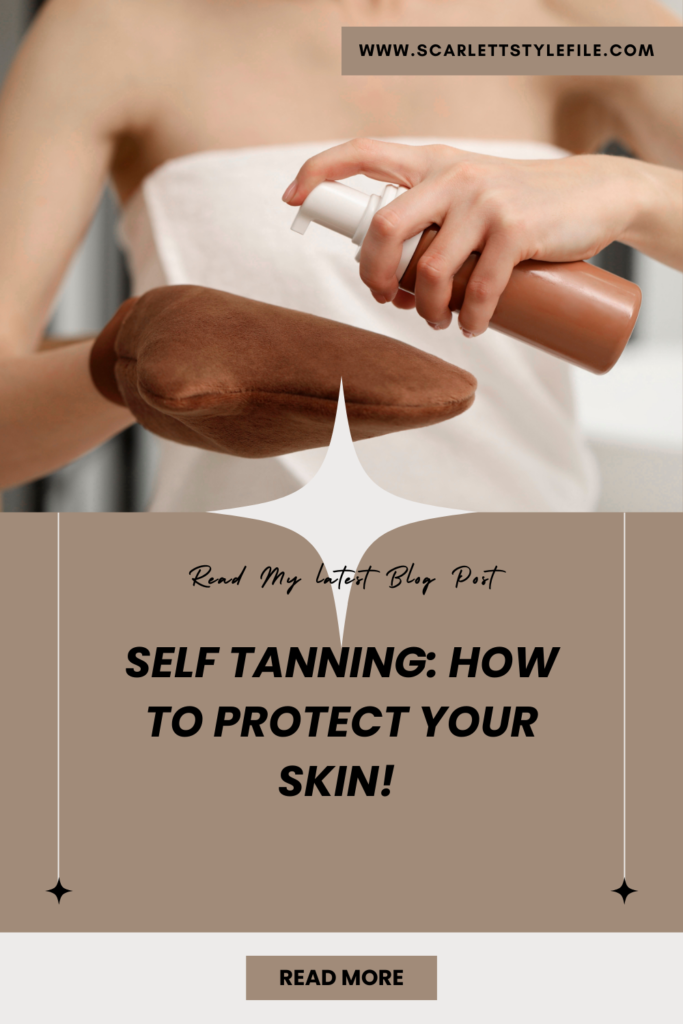
How Does Self Tanning Work? Is it Safe?
my experience with self-tanning

So, let’s talk about tanning. It became really popular back in the ’20s and ’30s when people started wearing bathing suits more. Personally, I’m the lightest one in my family. My oldest brother is really dark (We’re talking Zendaya’s skin tone).
We have the same mom and the same dad , or at least that’s what I think. (Well, you’d have to ask my mom, but I’m just kidding. My mom would be mad if she read this). But yeah, I’m like five to six shades lighter than my brother and about three shades lighter than my mom.
Growing up, my family always teased me about my skin color because they’re not as pale as me. It made me feel insecure about being so fair. I even used to try burning my skin in the sun, thinking it would give me some color like my sibling. I even attempted self-tanning booths, but thankfully, I never went as far as using tanning beds. Some people still do, which is a whole other issue.
Over time, though, I’ve learned to accept my fair skin. Well, mostly. My legs are still so pale they practically glow in the dark, which can be a bit awkward. I have my own way of dealing with it, though, mostly involving self-tanners.
what is Self Tanning?

They’re called dihydroxyacetone, but let’s just call them DHA from now on. Usually, they make up about two to five percent of any solution.
Essentially, DHA is a clear liquid made of three carbon sugars. It reacts with amino acids and keratin in the outer layer of your skin, called the stratum corneum. This layer sits on top of your skin (epidermis) and beneath that is the dermis.
The reaction it causes is similar to when you toast bread or marshmallows, creating what’s known as the Maillard reaction. So, when you apply a self-tanner, you’re basically giving yourself a tan without the sun’s damage.
So, what’s going on there? Well, it’s basically a chemical process involving amino acids found in the outer layer of your skin, called the stratum corneum, reacting with keratin. This reaction produces a substance called melanoidins, which are brown in color. These melanoidins look brown because they soak up certain wavelengths of sunlight and light, giving off a brown hue.
Now, while this reaction is going on, you might notice a bit of a smell. When I do it, my partner says I smell like Corn Flakes, though personally, I don’t mind that smell. It’s kind of like the scent you get from lab mice, if you’ve ever been around that.
So, basically, when you use those spray tan products, the smell that comes with it. It’s because of some chemicals reacting on your skin to make the tan color. No matter which product you pick, they all give off this smell because of the reaction. Some of them try to cover it up with other scents, but deep down, they all have that funky smell. And sometimes, the color sticks to your skin for good.
No matter how much you scrub or wash, you can’t completely remove a tan. Scrubbing might make it fade a bit, but eventually, those top layers of skin with the tan will naturally shed within about a week or so. So, even if a product claims to give you a tan that lasts longer, it’s not true because your skin sheds regularly. Expect a self-tan to stick around for about a week before it fades away.
application and how self-tanner wears

Most people know how to put on self-tanner, but I still struggle with it after years of trying. I end up with streaks. People advise exfoliating first, making sure your skin is totally dry, and being careful around areas like wrists, elbows, and joints.
Something interesting I’ve noticed is that where there’s less keratin, the self-tanner doesn’t soak in as much, so the color isn’t as strong. But where there’s more keratin, like on sunspots or seborrheic keratoses (those skin growths), the self-tanner gets darker.
So, if you put self-tanner on your face, it can highlight your sunspots and make them look worse. Just something to keep in mind if you want an even complexion and are using self-tanner.
does Self Tanning age your skin?!

Using self-tanning products can actually make your skin age faster, which is pretty well known. Here’s why:
When you apply self-tanner, it triggers a reaction in your skin called the Maillard reaction. This is the same process that gives toasted buns or caramelized onions their brown color. Essentially, it’s like cooking your skin, but without the sun’s harmful UV rays. However, this still leads to the formation of harmful molecules called free radicals.
These free radicals are troublemakers, causing damage to your skin cells. The Maillard reaction produces something called Amadori products, which then generate free radicals when your skin is exposed to sunlight. This whole process speeds up the aging of your skin, causing things like sun spots, wrinkles, and a loss of elasticity.
Interestingly, Amadori products also lead to the formation of something called advanced glycation end products, or AGEs for short. These AGEs contribute to the dryness and dehydration you might feel after using self-tanners.
Some self-tanners try to counter this by adding hyaluronic acid, which temporarily plumps up your skin. But in the long run, using self-tanners can make your skin look worse, with more wrinkles and dryness.
Another interesting finding is that when you use self-tanners containing DHA and then go out in the sun, your skin generates over 180% more harmful radicals compared to untreated skin. This means that the damage caused by free radicals is almost doubled.
As a result, areas where you’ve applied self-tanner may age faster and suffer DNA damage. These free radicals from DHA lead to oxidative stress, which is known to contribute to various signs of aging like wrinkles, dark spots, and skin sagging—a triple threat to your skin’s health.
does Self Tanning cause skin irritation?

Some people may experience skin irritations and a weakened skin barrier when using self-tanners, although this isn’t unique to DHA. Sensitivities can arise from various products, but it’s worth noting that for some, self-tanners could be the main culprit behind these issues.
does Self Tanning affect your vitamin d levels?
When you use self-tanners, your body doesn’t produce as much vitamin D. So, if you’re always using sunscreen, staying out of the sun, and just using self-tanners, you need to pay attention to your vitamin D levels. You might have to take a supplement to make up for it.
spray tans

Spray tans are tricky because they involve putting a chemical called DHA on your skin. But what happens if you breathe in DHA and it reaches your lungs? That’s when things can get risky.
The FDA has warned against using spray tan booths, especially for people who work in these places and do lots of treatments every day. They’re exposed to a lot of DHA, and that could harm their lungs over time. We’re not sure what other problems it might cause.
So, while spray tans are safer than tanning beds, especially the ones in booths, there’s still a concern about their safety. This highlights something important for all consumers to remember: just because something’s for sale doesn’t mean it’s totally safe.
I’ve seen people selling drugs on the streets of Downtown LA. It’s not safe. Using spray tans in booths might not be entirely safe either. But like with anything, it’s the amount that matters. So, don’t panic if you’ve tried it, just be careful not to overdo it. If you do go for spray tans, make sure to cover your nose, close your mouth and eyes, and don’t breathe in while the machine is on. That’s pretty much what you can do to stay safe.
And just because something is safe in one way, like putting it on your skin, doesn’t mean it’s safe in other ways. We can eat jalapenos, but we wouldn’t want to put them on our skin. Similarly, we can use DHA on our skin safely, but inhaling it is a different story. So, my main concern with DHA and self-tanners is the spray booths where you breathe it in.
are dHA free self tanners legit

They’re usually made from erythrulose, which comes from raspberries, I believe. They also create free radicals, speeding up aging. It’s a clever marketing trick, but does it really make a difference in the end product? Not really.
do i still recommend self tanning?

The answer is oddly yes, but it’s best to do it in moderation, like anything else. Just like I wouldn’t advise you to drink 30 gallons of water a day, self-tanning every single day isn’t a good idea either. However, I don’t see any harm in doing it occasionally. And when it comes to tanning, using a bottle tan is a good choice. So, yes, go ahead and use the bottle tan for that sun-kissed glow.
how to protect your skin when using self tanner?
Here’s a suggestion: if we’re concerned about the potential harm from free radical production, why not start by applying an antioxidant-based body cream?
Let me offer you two options. Firstly, there’s Gold Bond. They offer a Restoring Body Lotion infused with vitamin C and kiwi extract . Apply that first, let it dry, then proceed with the self-tanner. This approach should help minimize any resulting damage.

Secondly, if you prefer another option, The Inkey List offers a Q10 serum . This antioxidant serum goes a long way, so you only need a small amount. Apply it before using the self-tanner to shield your skin from potential damage caused by free radicals. While not as severe as sun damage, these free radicals aren’t ideal for aging. So, if you’re looking out for your skin, starting with an antioxidant is a smart move.

As for spray tanning booths, I don’t recommend them. I stopped using them long ago and don’t think they’re worth the risk. It’s best to steer clear.
5 best Self tanners in the Market
So, which self-tanners do I like? Well, I’ve tried quite a few. Jergens has one I like because it gives an instant glow. Tan-Luxe has a spray I use sometimes, it’s called their water spray. But I don’t like their drops because when I used them on my face, I didn’t apply them evenly. My mother-in-law noticed and said my temples looked weirdly hollow. So, I stopped using the drops.


I also like Clarins. They have a gel-based self-tanner called Gelée Auto-Bronzante. And lastly, I’m a fan of St. Tropez self-tanners too.

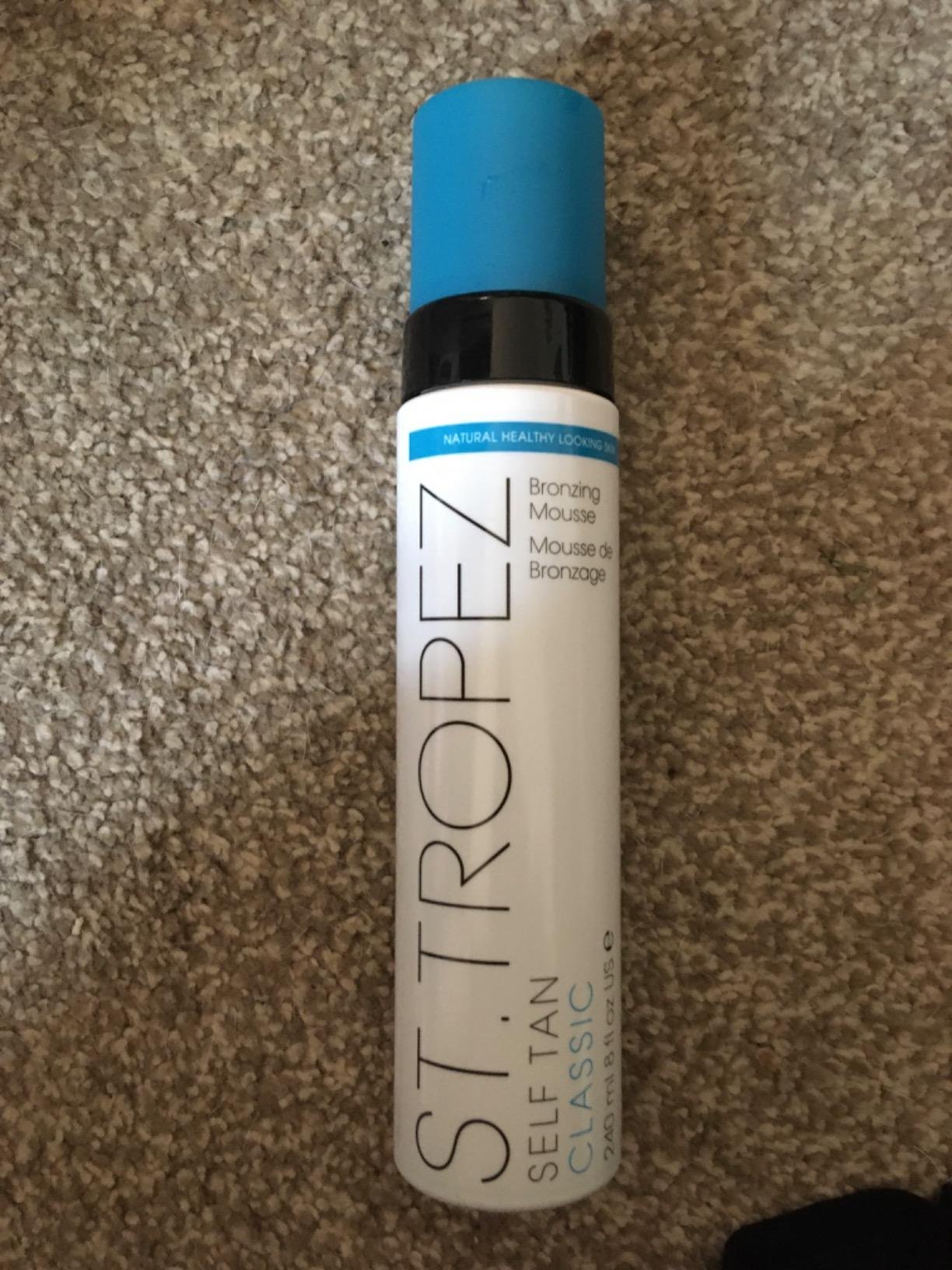

So, basically, nothing’s perfect. Even water can be harmful in certain amounts. You need to think about whether the risks outweigh the benefits. If you really want a tan, using self-tanners is safer than spending too much time in the sun or using tanning beds. But if you can control yourself and not overdo it, that’s even better. Personally, I only use self-tanners when I want my legs to look less pale or before I go to the beach to avoid feeling self-conscious.

And when I’m at the beach, I always put on sunscreen. That’s really important. Self-tanners don’t protect you from the sun at all, so you still need sunscreen to avoid skin damage. They don’t have any SPF, so they won’t keep your skin safe. I remember reading the opposite somewhere, and it nearly gave me a stroke.
The Bottom Line
So this was my rant about self tanners , I hope this article helped you learn one thing or two about self tanning !
Feel free to leave any questions or feedback in the comments. I truly value my readers’ input.




